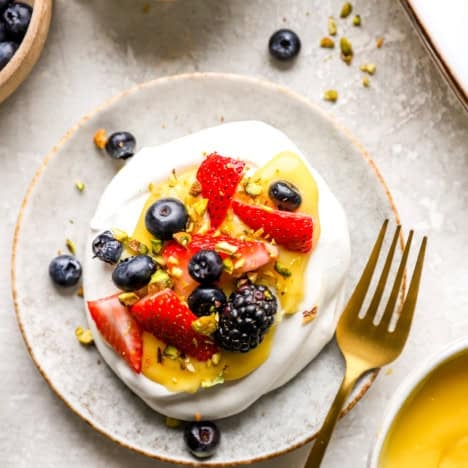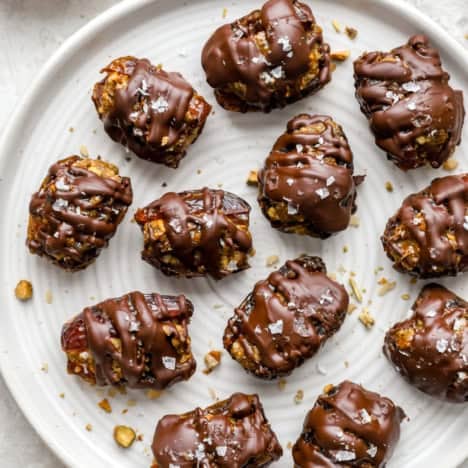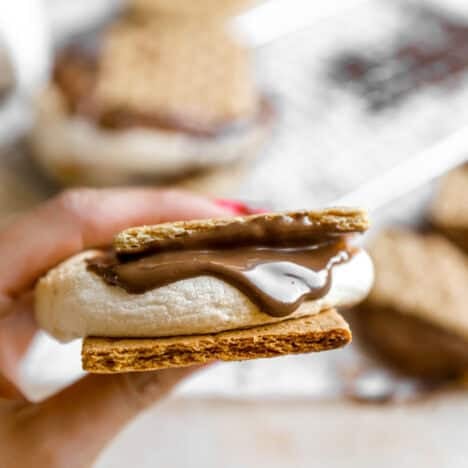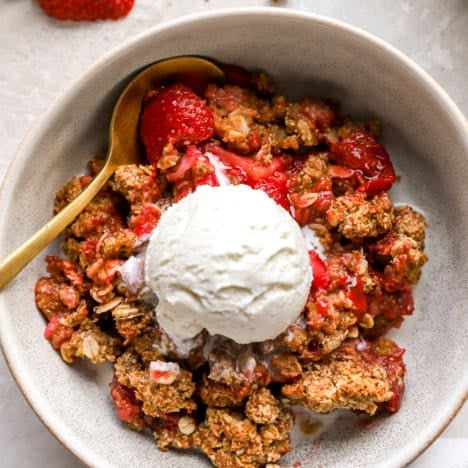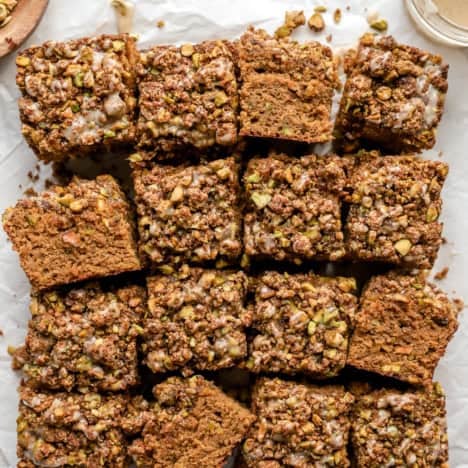This post may contain affiliate links. Please read my disclosure policy.
This Easy Mini Pavlova Recipe is a bite-sized dessert that’s just as pretty as it is tasty! Crisp on the outside with a soft, marshmallow-like meringue center, it’s served with sweet, citrusy lemon curd and various toppings for a single-serving treat everyone loves.
Impressive in appearance but secretly easy to prepare, this pavlova dessert recipe is gluten-free, nut-free, and dairy-free-friendly, too.
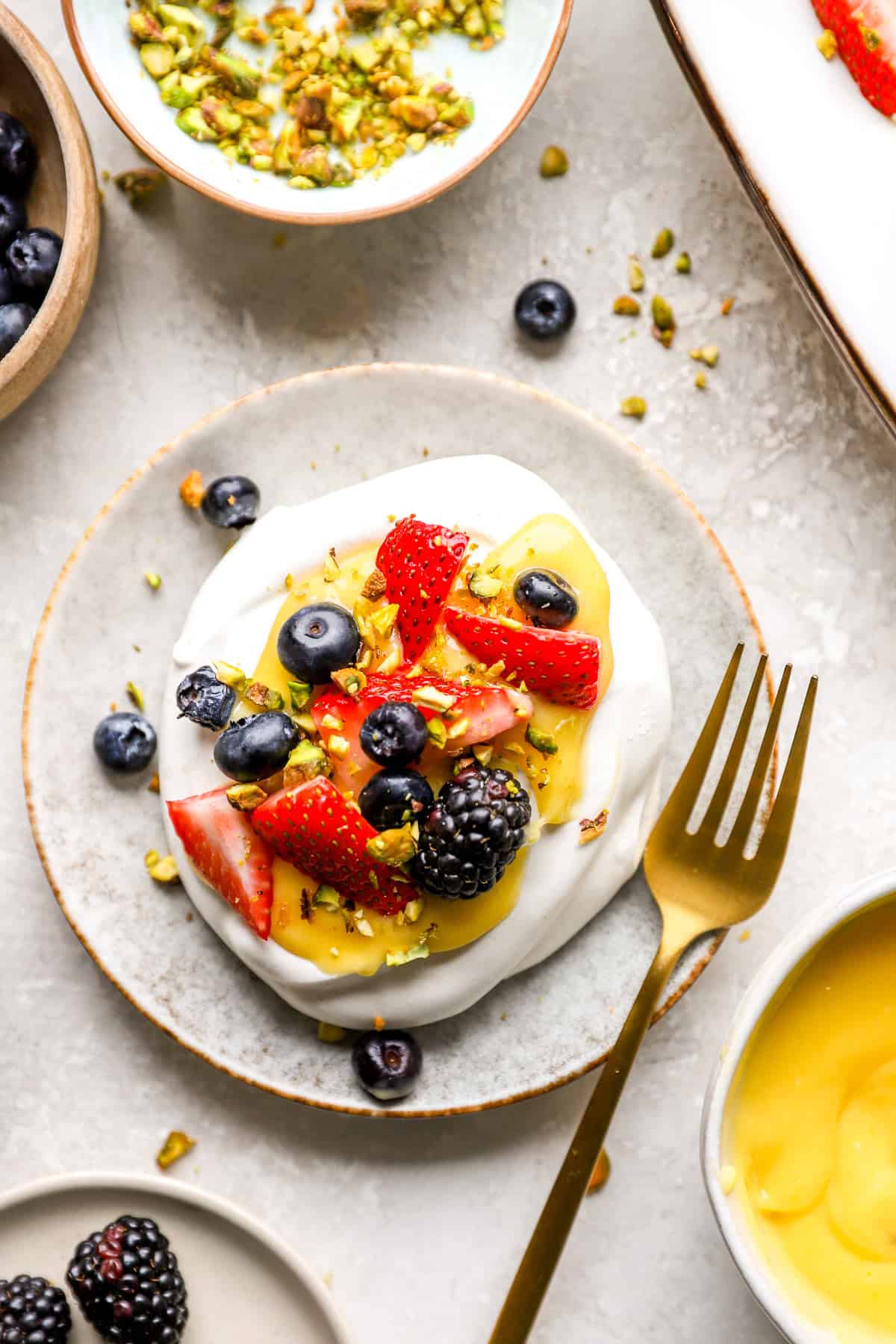
The Best Mini Pavlova Recipe
If you’re unfamiliar, pavlovas are a meringue-based dessert popular in New Zealand and Australia. Created in the 20th Century, they’re believed to have been named after Anna Pavlova, a Russian ballerina, though the exact origins remain debated.
I’ve adored the dessert for years, but was always a little intimidated to test the recipe at home. However, when I perfected my maple meringue cookies, I knew it was time to give it a try.
That said, this easy pavlova recipe has been tried and tested multiple times to ensure I got it just right. Now, I’m happy to say the end result is just as delicious as any restaurant version I’ve ever had, and the steps are simple! I serve it with my lemon curd topping for a citrusy twist, and it’s always a hit. Now, it’s a staple for spring and summertime celebrations!
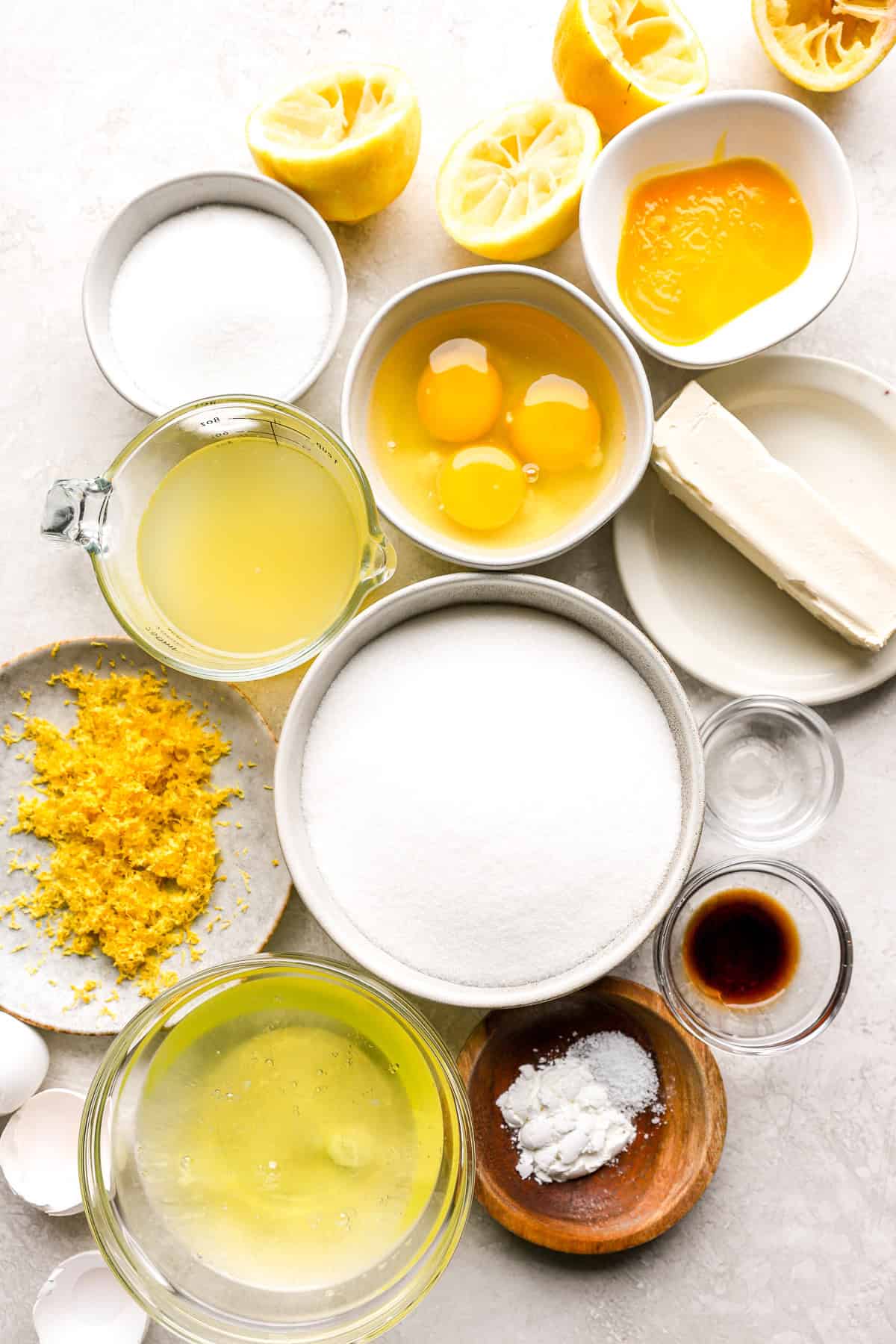
Ingredients Needed and Substitutions
*Scroll down to the recipe card for the full recipe and ingredient list!
- Egg Whites: You’ll need six egg whites to form the base of the meringue.
- Fine Caster Sugar: This is a type of granulated sugar with smaller grains that blend into the meringue without making it grainy. However, you can use any sugar you have on hand.
- Vinegar: This stabilizes the egg mixture, helping it whip and allowing the meringue to hold its shape.
- Cornstarch: This absorbs excess moisture, preventing the meringue from weeping.
- Salt: Just a pinch enhances the rest of the ingredients.
- Vanilla Extract: Infuses the dessert with rich vanilla flavor. I use homemade vanilla extract, but high-quality store-bought vanilla will also work.
- Lemon Curd: I use the lemon curd from my easy lemon bars, but you can usually find store-bought jars, if preferred.
Topping Options
You can serve this mini pavlovas recipe on its own, but it’s super pretty with extra toppings! Some of my favorite options include:
- Fresh Berries (strawberries, blackberries, blueberries, or raspberries)
- Plums, Passionfruit, Mango, or Kiwi
- Crushed Pistachios
- Lemon Curd
- Jam
- Chocolate Shavings
- Powdered Sugar
- Coconut Whipped Cream
How to Make a Mini Pavlova Recipe with Lemon Curd
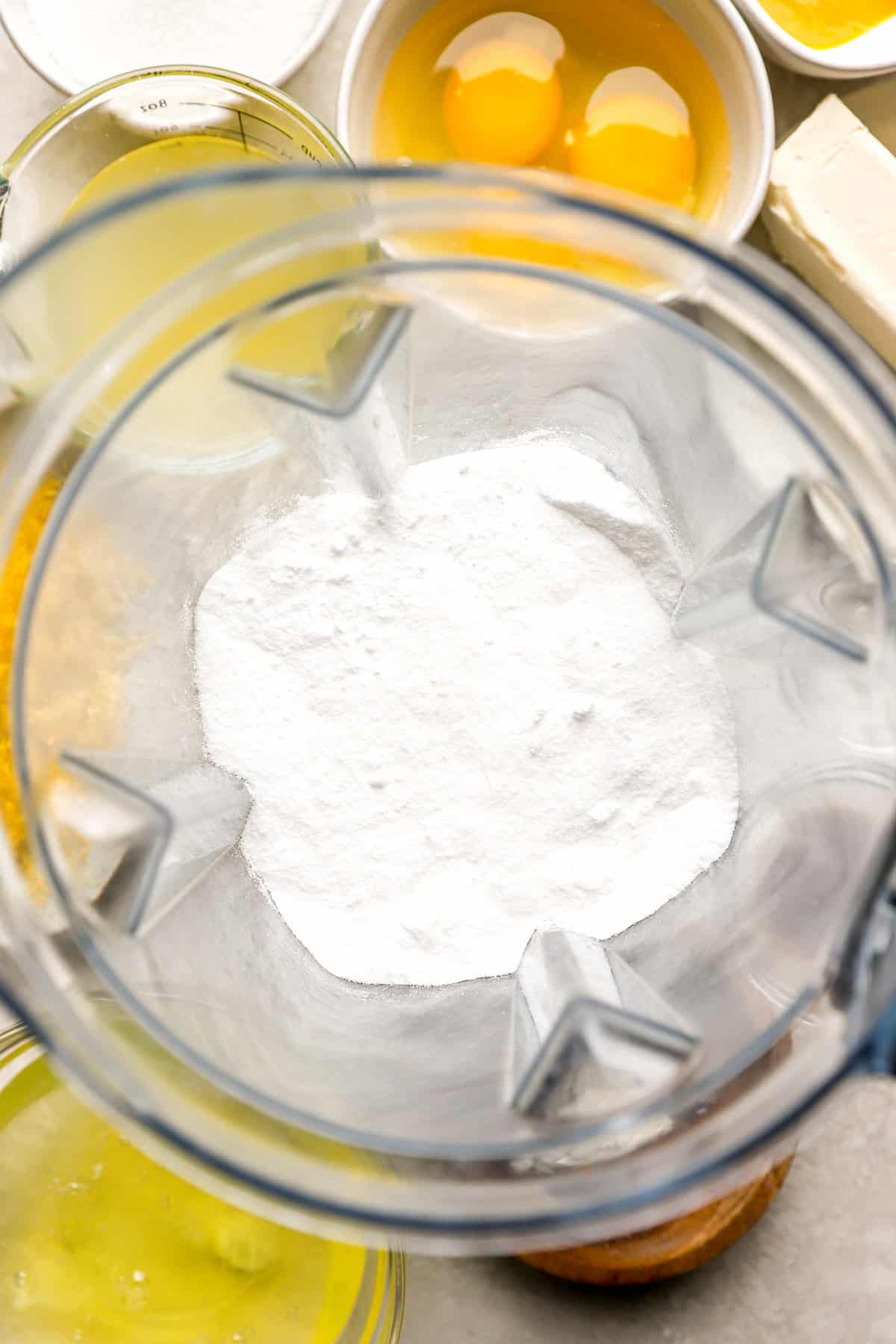
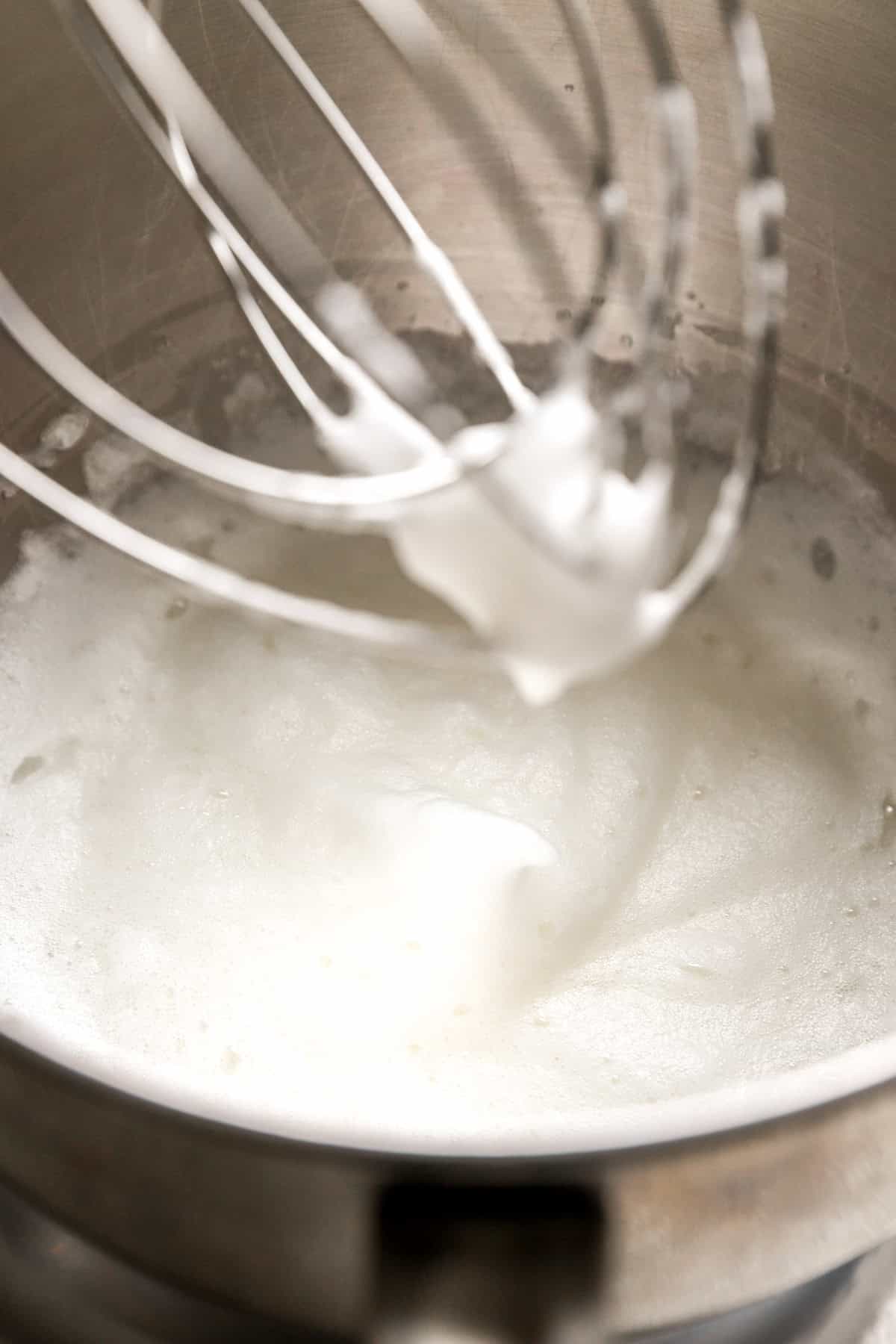
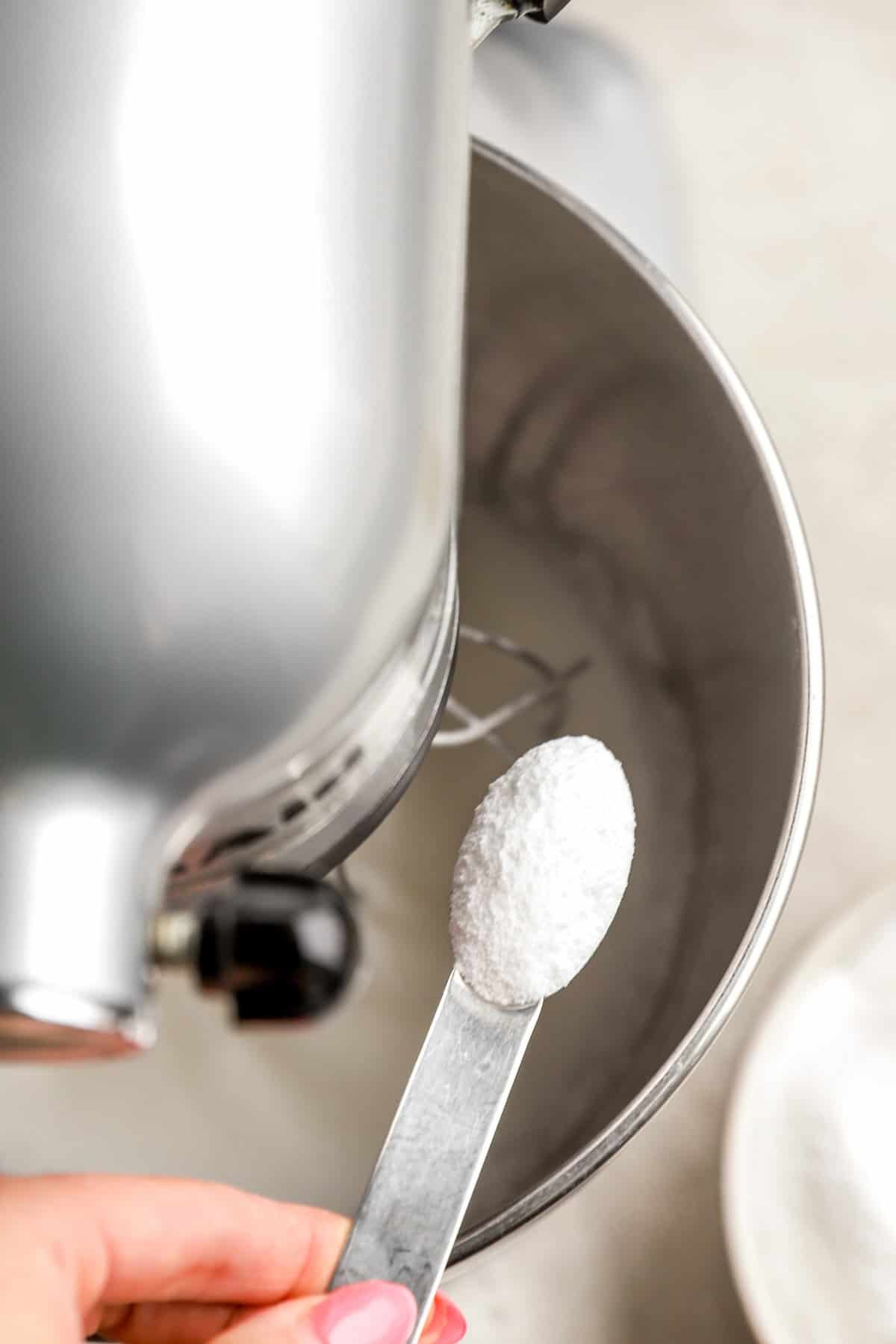
- Prepare the Sugar: Pulse the sugar in a blender until a fine consistency forms. Just be careful not to blend so much that it turns into powdered sugar!
- Make the Meringue: Use a stand mixer fitted with a whisk attachment to beat the egg whites on medium speed until soft peaks form. Then, add the sugar one tablespoon at a time, mixing between each addition. Add the remaining ingredients, and continue to whip until glossy, stiff peaks form and the sugar is fully dissolved.
- Shape: Spoon the meringue mixture onto baking sheets lined with parchment paper.
- Bake: Transfer the baking sheets to a preheated oven, and bake. Then, turn off the oven, and allow the meringues to cool completely.
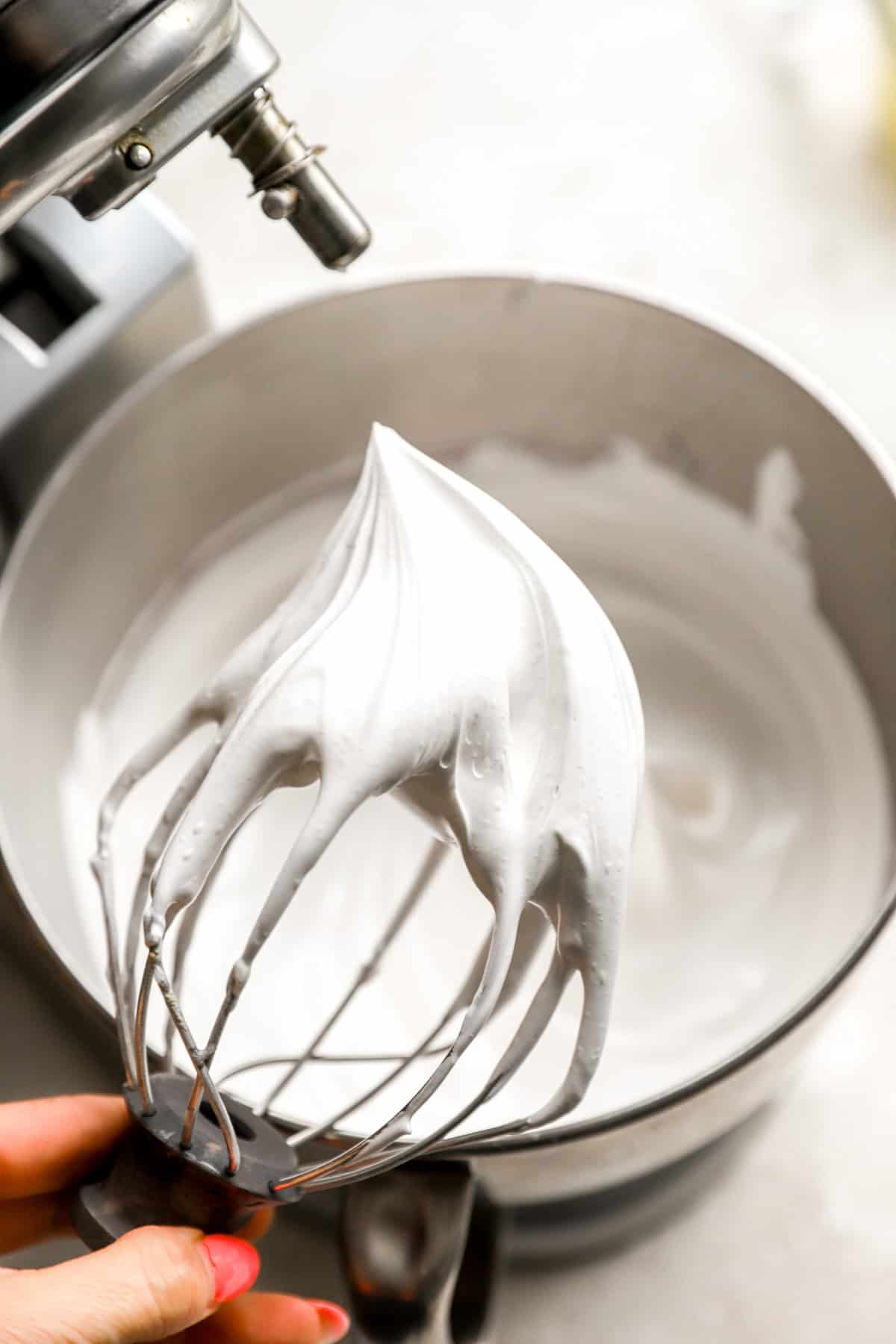
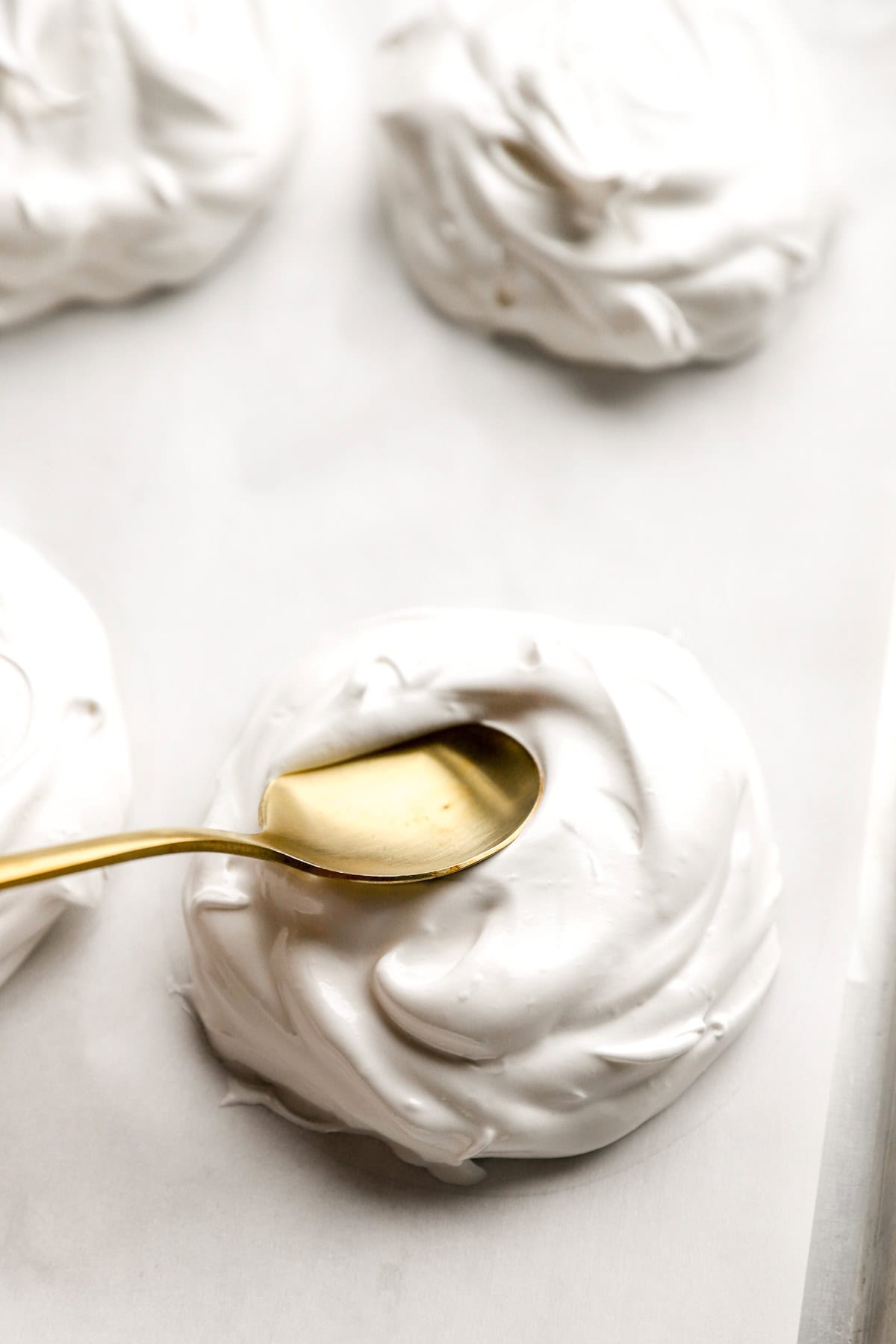
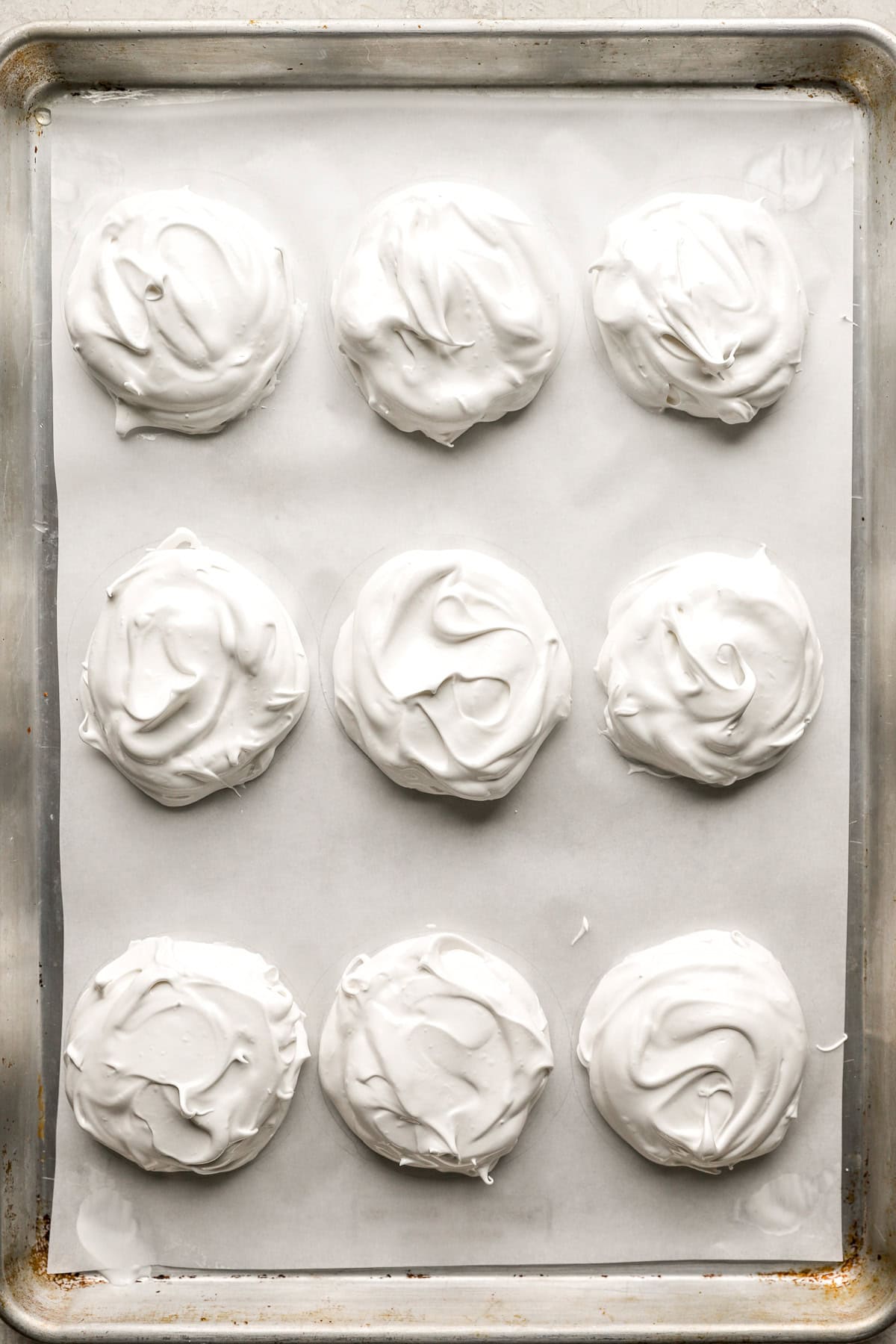
- Prepare the lemon curd: Place whole eggs and yolks, sugar, lemon zest and juice, and sea salt in a medium pot. Whisk over low heat until the mixture becomes thick enough to coat the back of a spoon. Then, remove from the heat, and use a fine mesh strainer to strain the lemon curd into a medium mixing bowl. Add butter, and stir to melt.
- Assemble: Once fully cooled, top each meringue with lemon curd, followed by your toppings of choice. Enjoy!
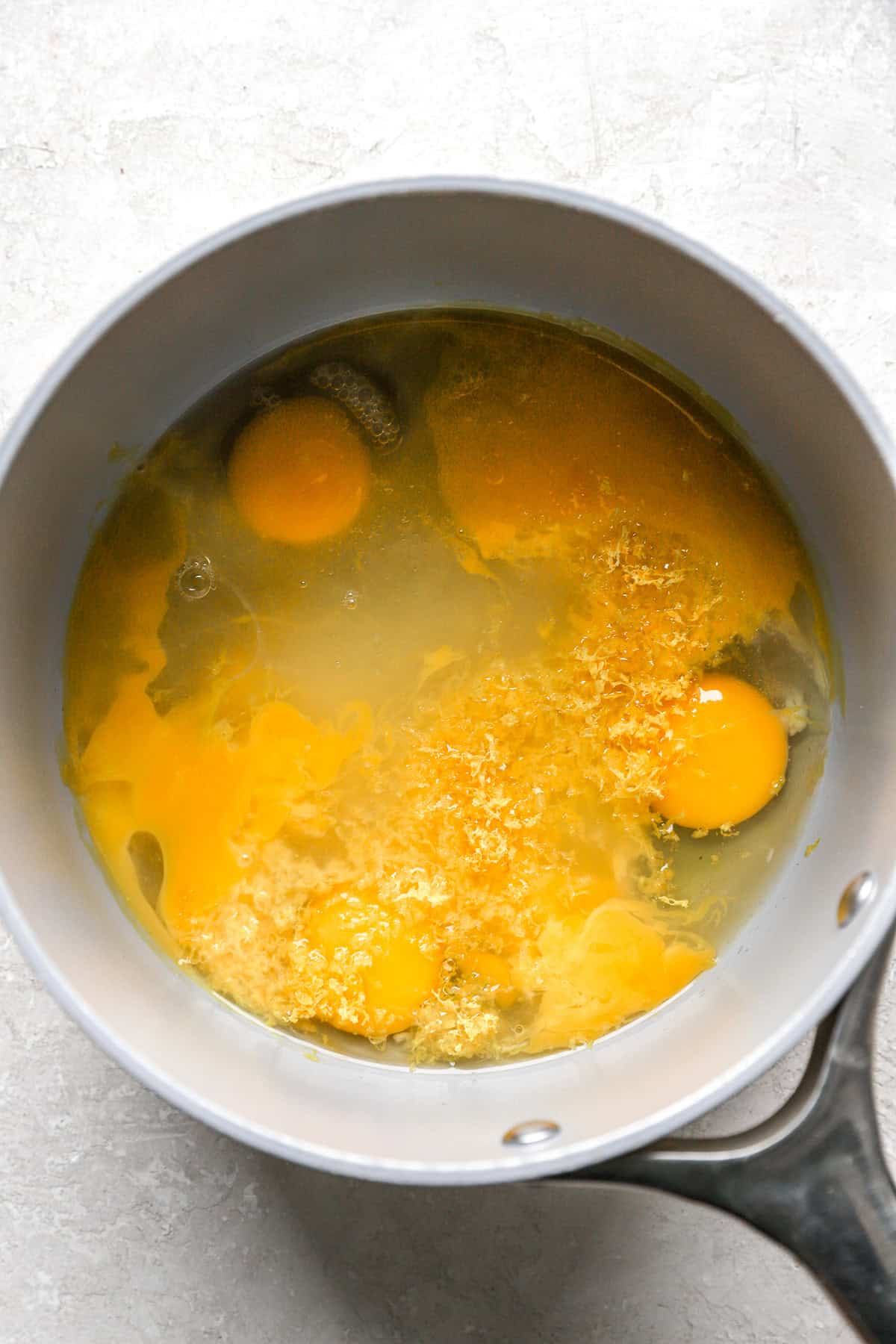

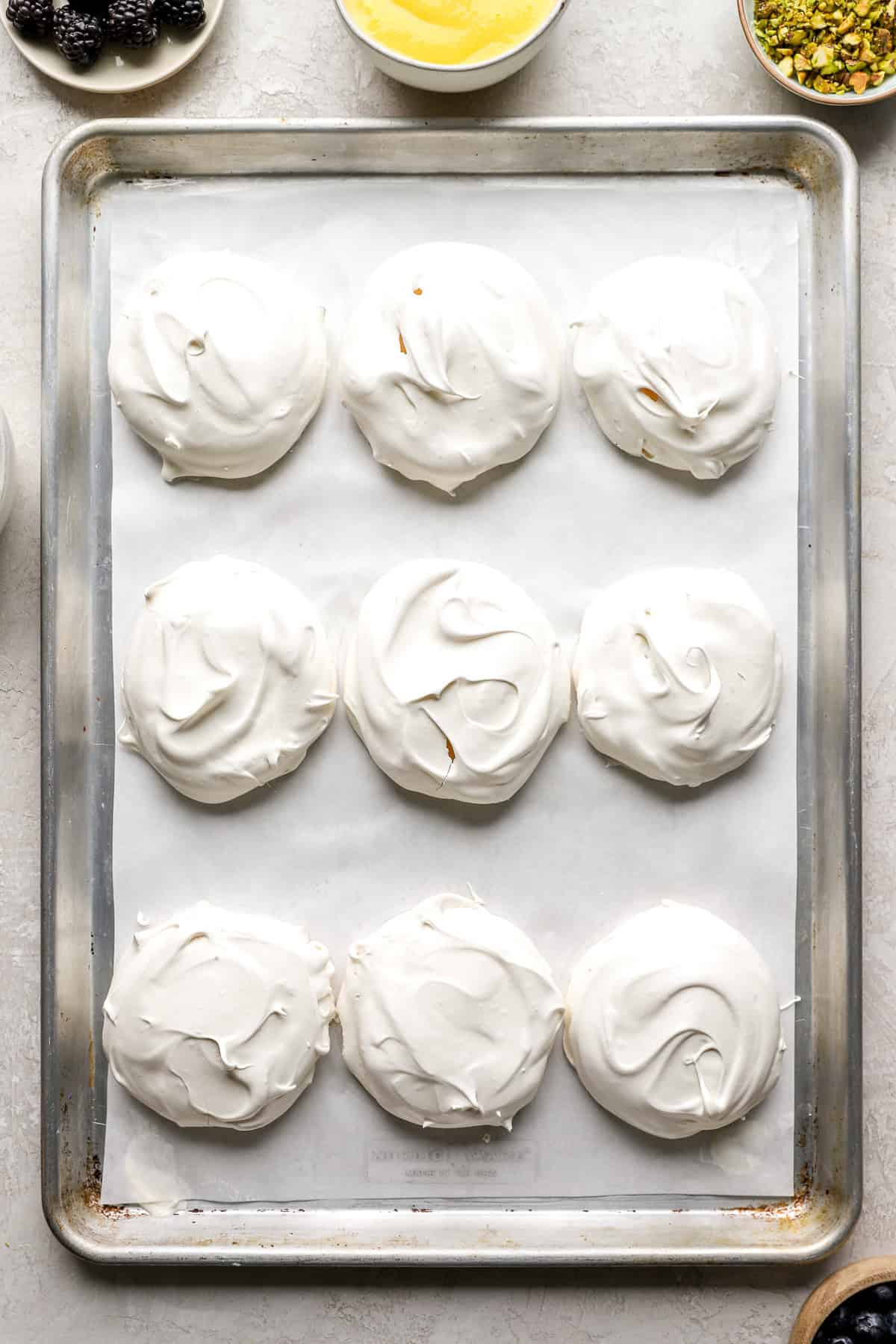
Kitchen Tools I Use
Tips & Tricks
- Use fresh eggs. Older eggs won’t whip as well.
- Humidity. As an FYI, humidity in your home can play a role in the success! I don’t recommend making on the most humid day of the year!
- Avoid egg yolks. If there’s any yolk in the meringue, it won’t whip up or hold its shape. Use any leftover yolks to make Hollandaise sauce or Avgolemono soup!
- Make sure to dissolve the sugar fully when mixing. You shouldn’t feel any grains when mixing it between your fingers.
- Do not open the oven door! This can cause a sudden temperature change, which can deflate and ruin the meringue.
- Cool completely. Make sure to allow plenty of time for the meringue to cool. You need at least 2 hours, but 4 is ideal. This helps the pavlovas dry out properly, creating the stable consistency and crisp exterior we want.
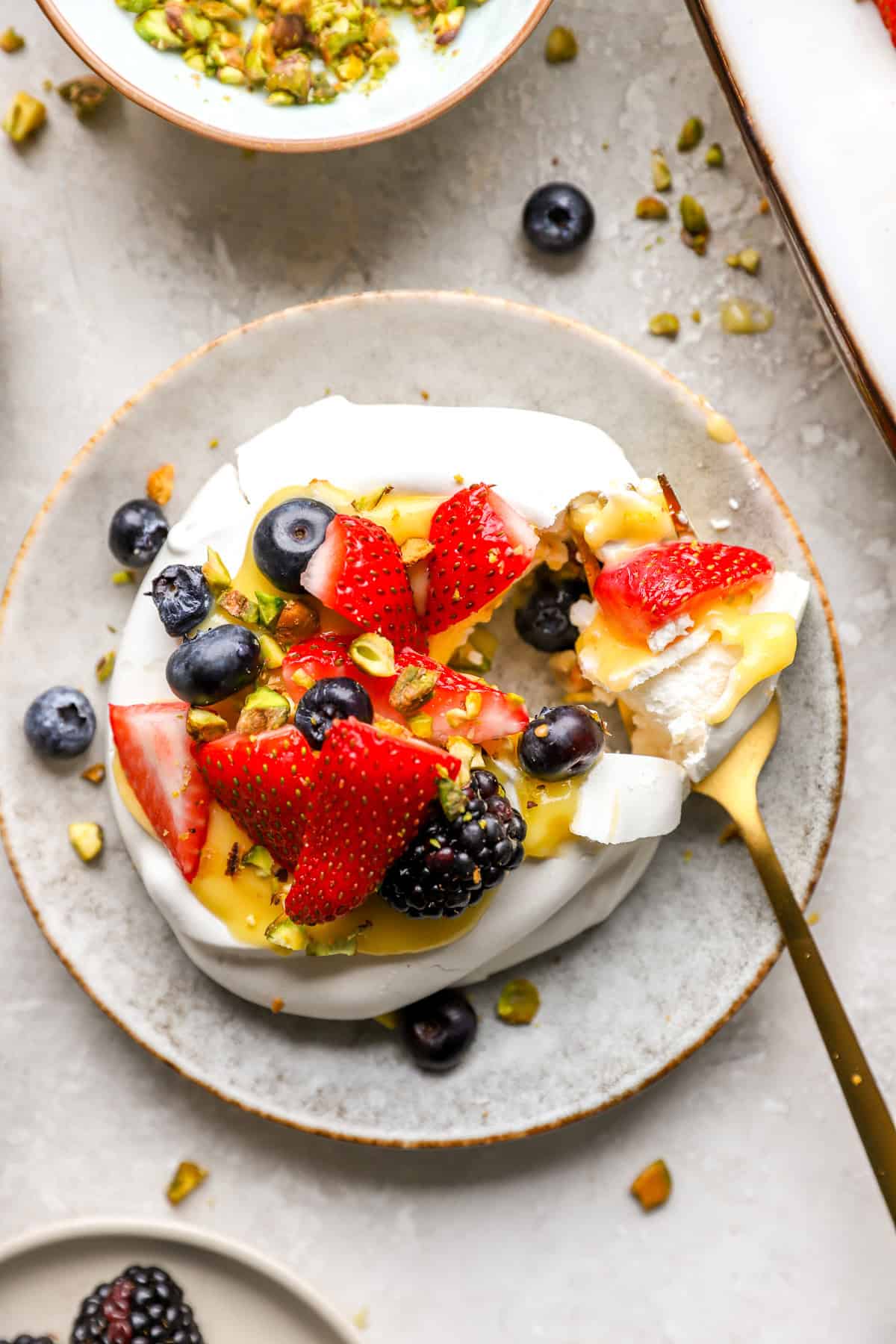
FAQs
The primary difference is in the texture and baking time. Meringues are baked for a longer period of time, which creates a crispy texture all the way through the dessert. However, pavlova recipes require much less baking time, which creates a crisp exterior and soft center.
Yes, though in my opinion they are best served day of. Once cool, you can transfer leftovers to an airtight container and store them (without the lemon curd) at room temperature for up to 2 days. If you want to prepare the lemon curd in advance, you can store it in an airtight container in the refrigerator for 1-2 weeks. Then, just assemble the dessert when you’re ready to serve.
More Dessert Recipes
- Marshmallow Fluff
- Healthy Coconut Macaroons
- Gluten-Free Key Lime Tart
- Gluten Free Strawberry Shortcake
Watch The Video:
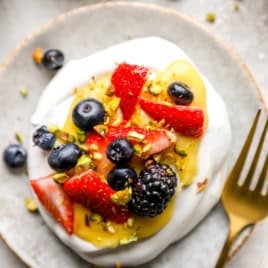
Mini Pavlova Recipe with Lemon Curd
Ingredients
For the Meringue:
- 1½ cups fine caster sugar or sugar of choice, pulsed in a blender until fine
- 6 egg whites
- 1 teaspoon vinegar
- 2 teaspoons cornstarch
- ¼ teaspoon salt
- 2 teaspoons vanilla extract
For the Lemon Curd:
- Use your favorite recipe or try this one from Lexi’s Clean Kitchen: Lemon Curd Recipe
Topping Ideas:
- Fresh fruit: plums strawberries, blackberries, blueberries, or raspberries
- Crushed pistachios
- Chocolate shavings
- Powdered sugar
Instructions
- Prepare the Sugar: Pulse the sugar in a blender until fine, being careful not to over-blend into powdered sugar.1½ cups fine caster sugar
- Preheat the Oven: Set your oven to 200°F (93°C).
- Prepare the Baking Sheet: Line a large baking sheet with parchment paper and set aside.
Make the Meringue:
- In a stand mixer fitted with the whisk attachment, beat the egg whites on medium speed until soft peaks form.6 egg whites
- Gradually add the sugar, one tablespoon at a time, mixing well between each addition.
- Add the vinegar, cornstarch, salt, and vanilla. Continue whipping until stiff, glossy peaks form and the sugar is fully dissolved (you shouldn’t feel any grains when rubbing a bit between your fingers).1 teaspoon vinegar, 2 teaspoons cornstarch, ¼ teaspoon salt, 2 teaspoons vanilla extract
- Shape the Meringue: Spoon the mixture onto the prepared baking sheet into 9 rounds, each about 4 inches wide.
- Bake: Place in the oven and bake for 1 hour and 15 minutes. Do not open the oven door during baking or while cooling. Turn off the oven and allow the meringues to cool completely inside—ideally 3–4 hours, but at least 2 hours. This helps them dry out properly.
- Prepare the Lemon Curd: While the meringues are cooling, make the lemon curd if you haven’t already.Use your favorite recipe
- Assemble: Once the meringues are fully cooled, top each with a dollop of lemon curd, followed by your choice of fruit and other toppings.Fresh fruit: plums, Crushed pistachios, Chocolate shavings, Powdered sugar
- Serve and Enjoy!
Notes
- Storage: Once cool, transfer leftovers to an airtight container and store them (without the lemon curd) at room temperature for up to 2 days, though I recommend these as more of a day of desert. If you want to prepare the lemon curd in advance, you can store it in an airtight container in the refrigerator for 1-2 weeks. Then, just assemble the dessert when you’re ready to serve.
- Use fresh eggs. Older eggs won’t whip as well.
- Humidity. As an FYI, humidity in your home can play a role in the success! I don’t recommend making on the most humid day of the year!
- Avoid egg yolks. If there’s any yolk in the meringue, it won’t whip up or hold its shape. Use any leftover yolks to make Hollandaise sauce or Avgolemono soup!
- Make sure to dissolve the sugar fully when mixing. You shouldn’t feel any grains when mixing it between your fingers.
- Do not open the oven door! This can cause a sudden temperature change, which can deflate and ruin the meringue.
- Cool completely. Make sure to allow plenty of time for the meringue to cool. You need at least 2 hours, but 4 is ideal. This helps the pavlovas dry out properly, creating the stable consistency and crisp exterior we want.
